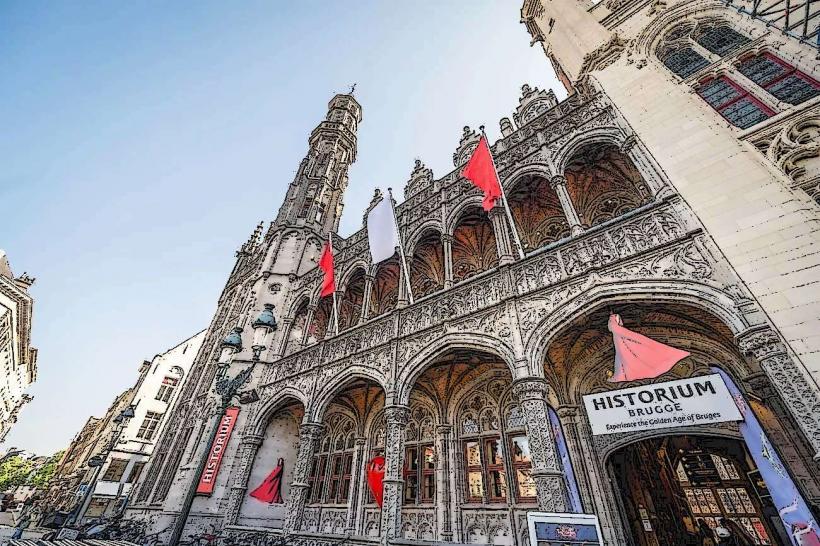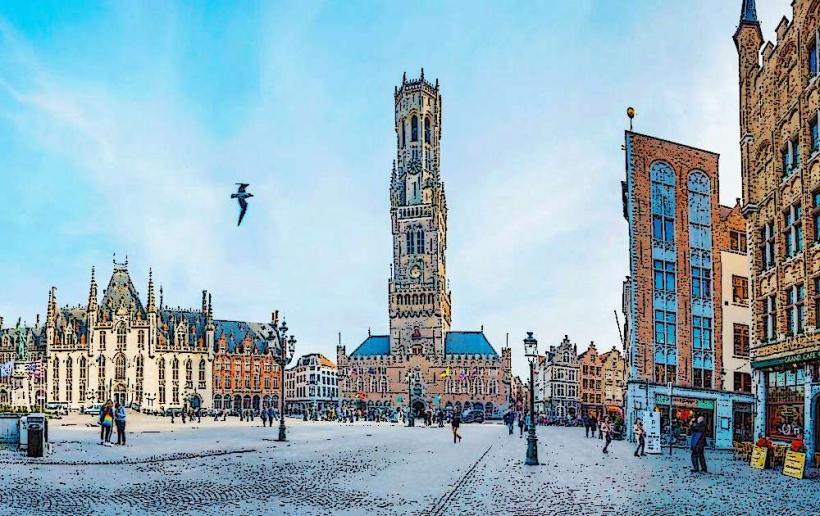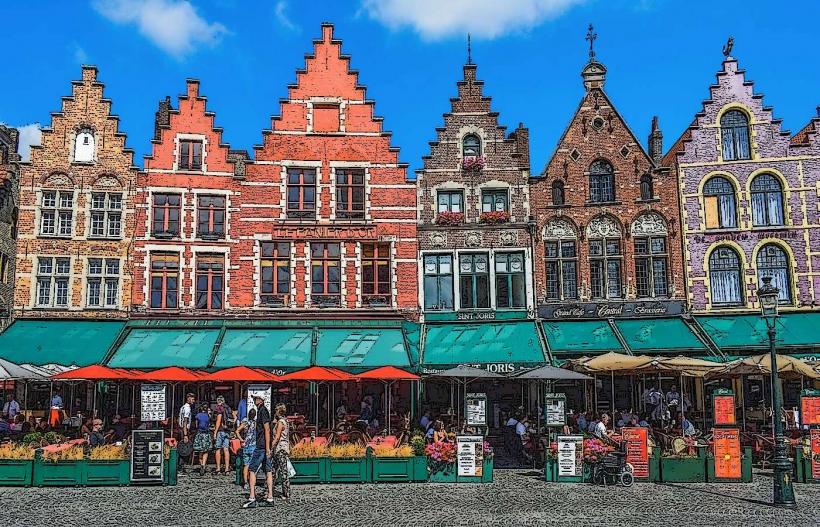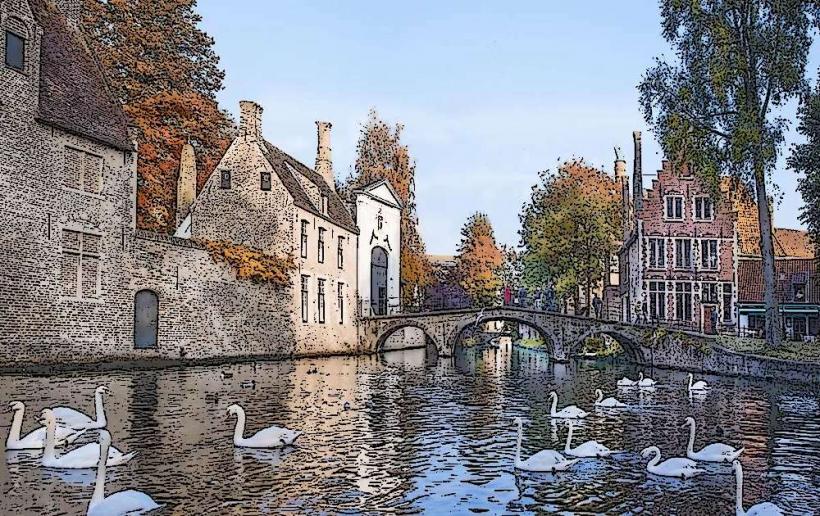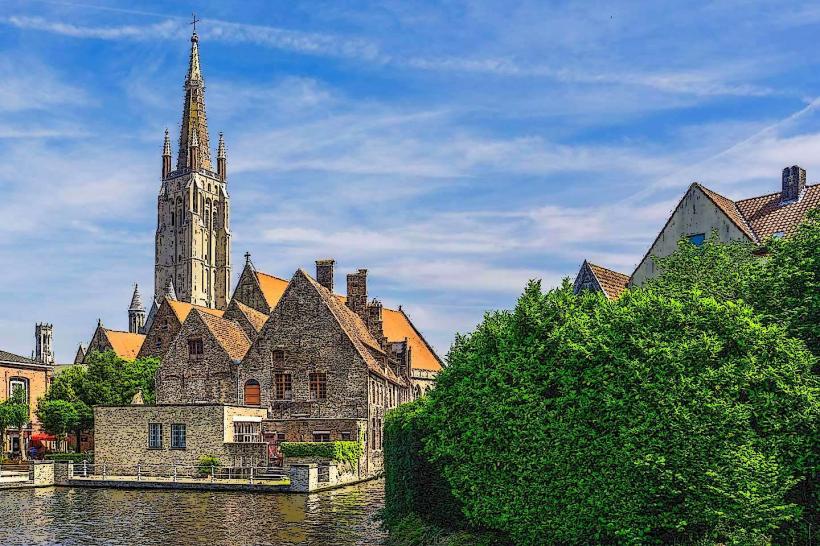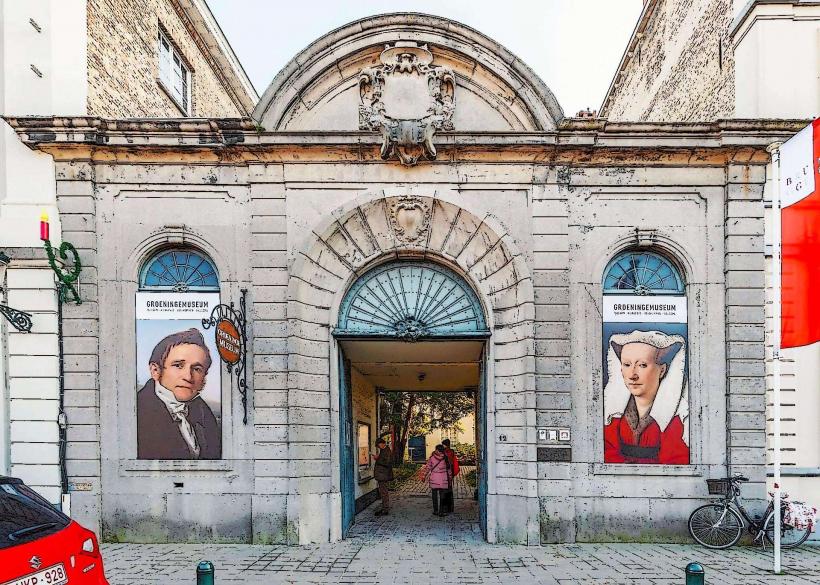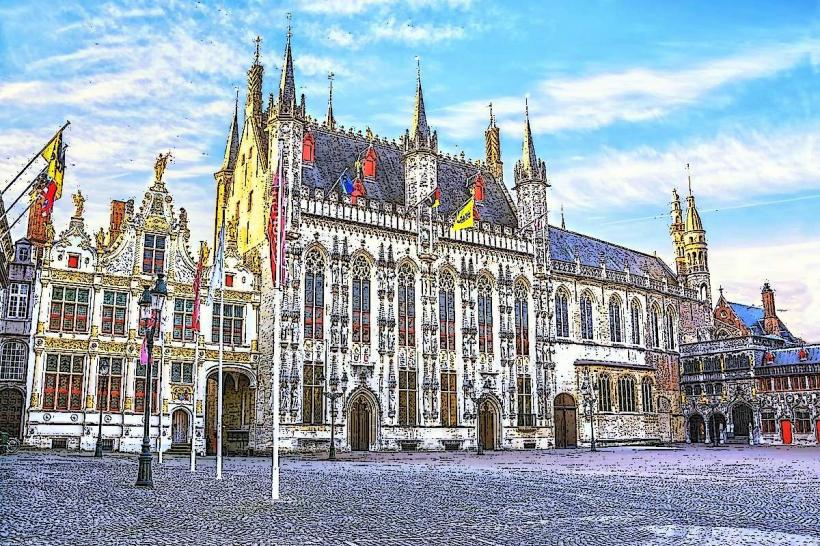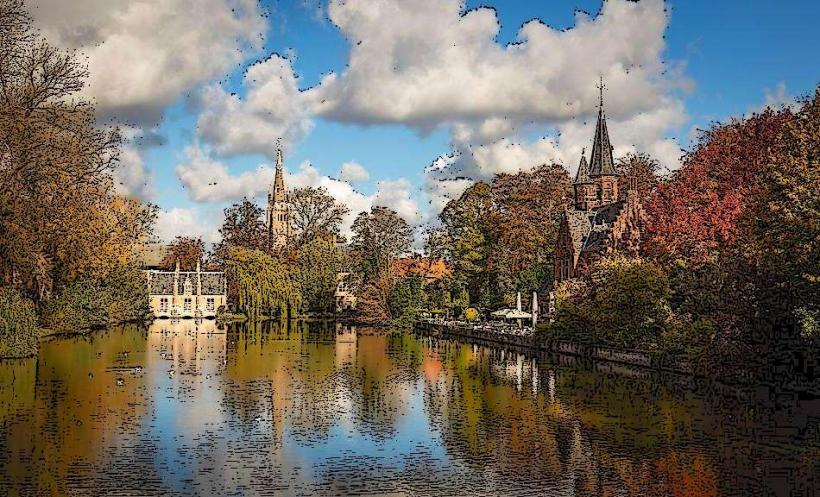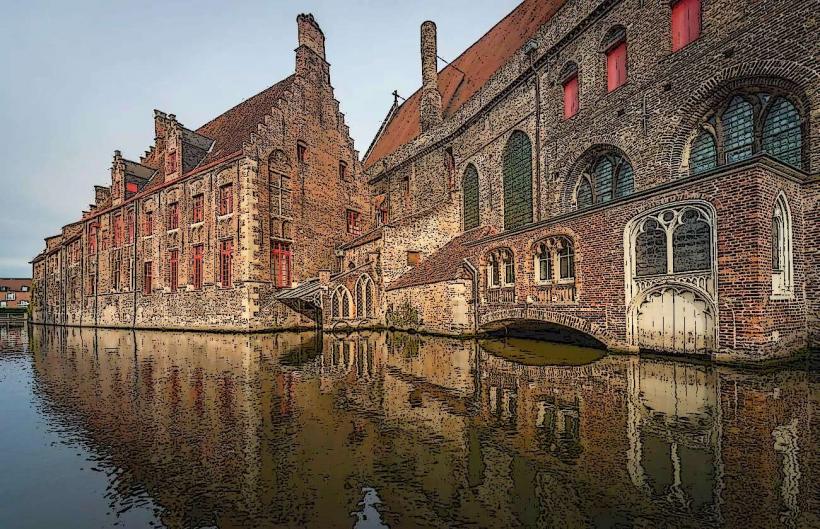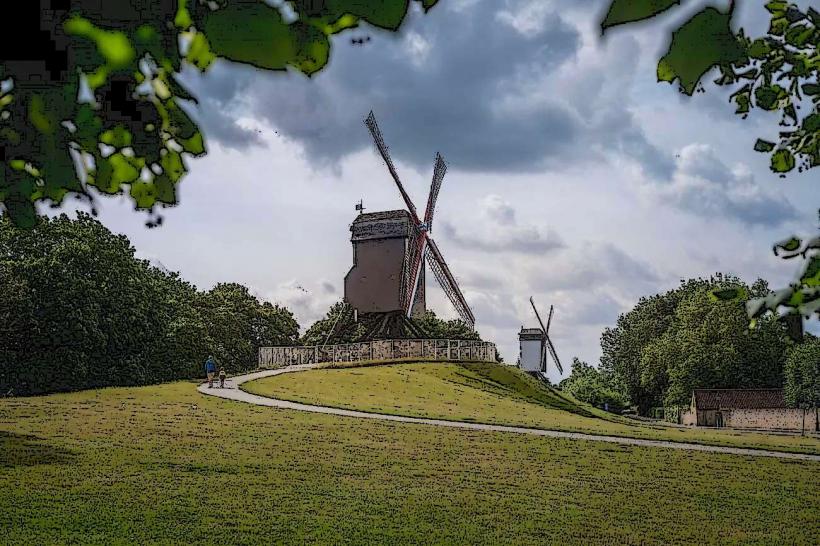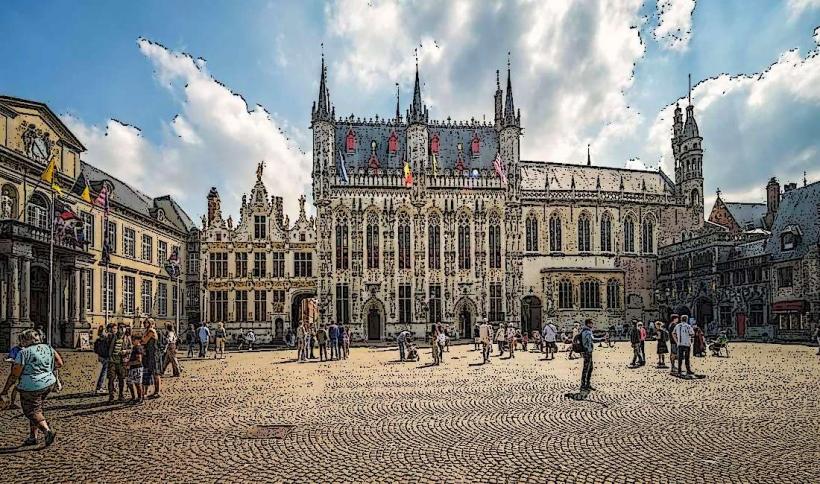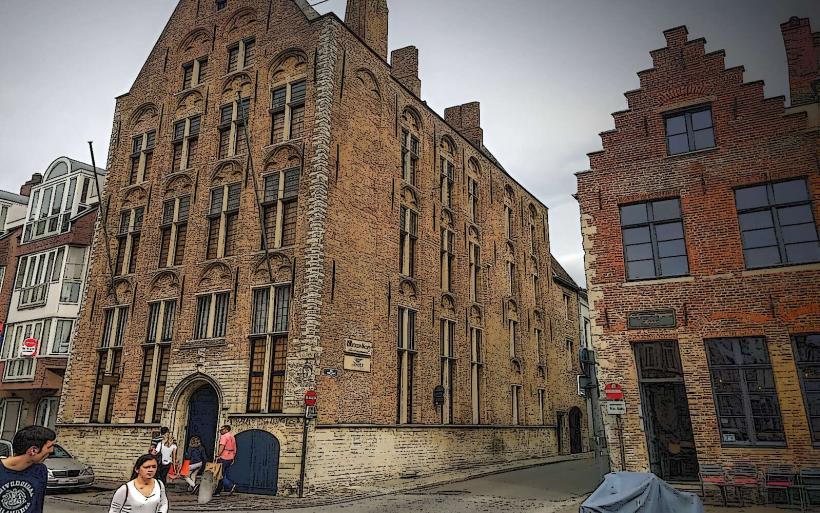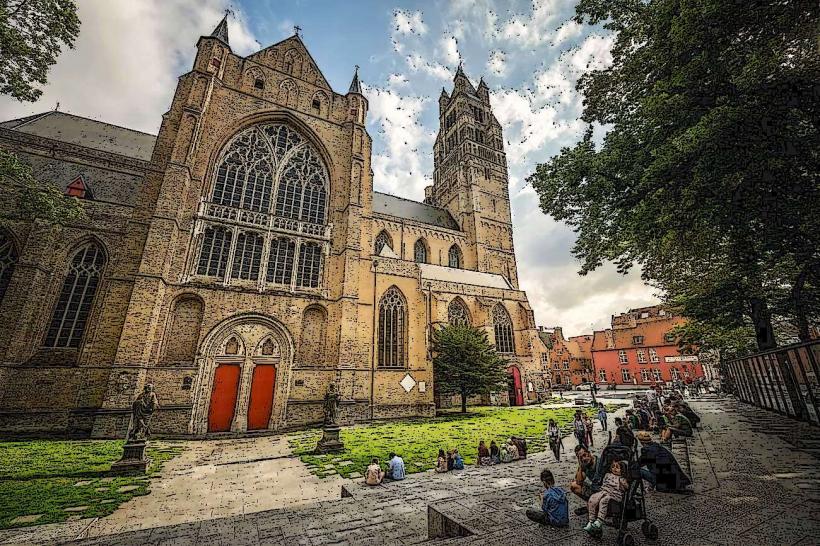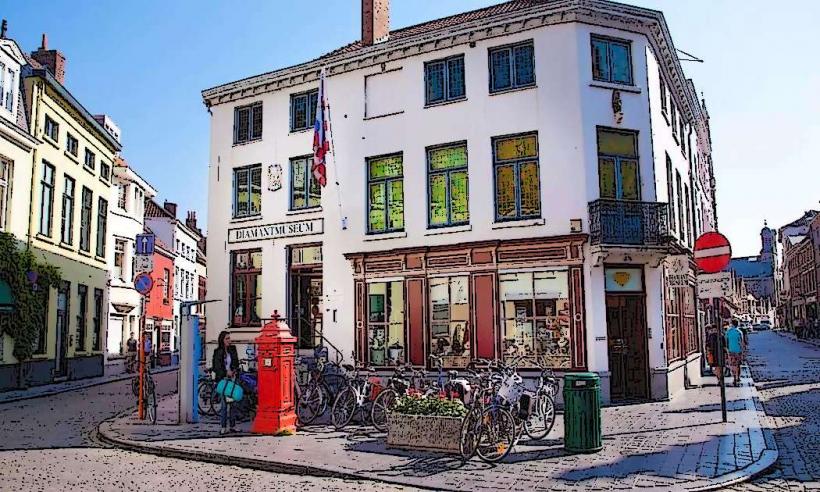Information
Landmark: Basilica of the Holy BloodCity: Bruges
Country: Belgium
Continent: Europe
The Basilica of the Holy Blood (Dutch: Heilig-Bloedbasiliek) is one of the most famous and important religious landmarks in Bruges, Belgium. Located in the Markt Square, this medieval church is renowned for housing a relic that is believed to contain the Holy Blood of Christ—a vial of blood that was said to have been collected during Christ's crucifixion. The basilica is not only a place of religious significance but also an architectural gem and a symbol of Bruges’ rich medieval history.
History and Significance
Founding and Origins: The Basilica of the Holy Blood was originally founded in the 12th century by Count Diederik of the Alsace, who brought the Holy Blood relic back to Bruges after returning from the Second Crusade (1147-1149). The relic was said to have been given to him by Baldwin IX, the Latin Emperor of Constantinople, and it quickly became an important religious artifact for the people of Bruges.
The Relic: The vial containing the Holy Blood is one of the most important relics in Christianity. According to legend, the blood of Christ was collected during his crucifixion and has been preserved for centuries. The relic is displayed to the public on special occasions, particularly during the Procession of the Holy Blood (Heilig-Bloedprocessie), an annual event in Bruges.
Religious Importance: The basilica has long been a place of pilgrimage, attracting devout Christians from all over the world who come to view the relic. The tradition of bringing the relic out during the procession continues today, making the church an enduring center of religious life in Bruges.
UNESCO World Heritage: The Basilica of the Holy Blood is part of the historic center of Bruges, which is a UNESCO World Heritage Site. Its role in the city’s religious and cultural history adds to its significance within the broader medieval heritage of Bruges.
Architecture
The Basilica of the Holy Blood is an excellent example of Romanesque and Gothic architectural styles, with distinct features from both periods. The church has two levels: the lower church, which is more Romanesque, and the upper church, which is built in the Gothic style.
Lower Church (Romanesque Style):
- The lower church is characterized by its Romanesque architecture, with thick stone walls, rounded arches, and a simple, yet solemn interior. This section of the church was the original building and has a dark, intimate atmosphere, evoking the medieval spiritual experience.
- The altar in the lower church is dedicated to Saint Basil, and the walls are decorated with medieval frescoes and stone carvings that reflect the church’s early history.
Upper Church (Gothic Style):
- The upper church is an example of the Gothic style, with its tall, pointed arches, vaulted ceilings, and stained glass windows. This section of the church is more ornate and spacious, providing a bright contrast to the lower church’s somber atmosphere.
- The most significant feature of the upper church is the chapel that houses the relic of the Holy Blood. The chapel is beautifully decorated and draws many visitors who come to see the vial.
Holy Blood Chapel:
- The Holy Blood Chapel is the heart of the basilica and where the relic of Christ’s blood is kept. It is located in the upper church and is an exquisite example of Gothic architecture, with elaborate decoration and beautiful stained-glass windows depicting biblical scenes.
- The relic itself is displayed in a silver-gilt shrine. It is shown to the public during special events and religious celebrations, particularly during the Procession of the Holy Blood held annually in Bruges.
Relic of the Holy Blood
- The Holy Blood relic is a vial believed to contain drops of Christ's blood, and it is a central element of the church’s significance. The relic is housed in a golden shrine in the upper chapel, and it is traditionally shown to the public during the annual procession on Ascension Day.
- Pilgrims and visitors flock to the basilica to see the relic, especially on these occasions. While there is no definitive proof of its authenticity, the veneration of the relic has been an important part of the church’s history for over 800 years.
Procession of the Holy Blood
One of the most important events associated with the basilica is the Procession of the Holy Blood (Heilig-Bloedprocessie), which takes place every year in May or June on Ascension Day. The procession celebrates the relic of the Holy Blood and its role in Bruges' history.
The procession involves a religious parade through the streets of Bruges, where participants in historical costumes, along with religious leaders, carry the relic in a golden processional shrine. The procession draws thousands of visitors and is one of the most significant religious events in Belgium.
The Basilica of the Holy Blood plays a central role in this event, with the relic being displayed to the public and carried through the city as part of the ceremony.
Visitor Experience
Visiting the Basilica: The Basilica of the Holy Blood is open to visitors throughout the year. It is free to enter, though donations are welcomed. Visitors can explore both the lower and upper churches, admire the architecture, and view the Holy Blood relic in the upper chapel.
Opening Hours: The basilica is typically open every day from 9:30 AM to 5:00 PM, but hours may vary depending on special services or events. The relic is only displayed on certain days, including during the Procession of the Holy Blood and at religious holidays.
Guided Tours: While the basilica can be explored on your own, guided tours are available to provide deeper insight into its history, architecture, and religious significance. Tour guides can explain the importance of the Holy Blood relic and its role in the city’s history.
Location: The Basilica is located at H. Bloedplein, just off the Markt Square in the center of Bruges. It is easily accessible on foot from many of the city’s main attractions.
Nearby Attractions
- The Basilica of the Holy Blood is located near other major landmarks in Bruges, including:
- Markt Square: The central square in Bruges, surrounded by historical buildings such as the Belfry of Bruges and Bruges Town Hall.
- The Burg Square: The square where the basilica is located, home to several important buildings, including the City Hall and the Old Civil Registry.
- The Museum of the Holy Blood: Located next to the basilica, this museum displays more information about the Holy Blood relic, the history of the basilica, and Bruges' religious significance.
Conclusion
The Basilica of the Holy Blood is a must-visit destination for anyone interested in Bruges’ medieval history, religious traditions, and architectural beauty. Whether you are visiting for the chance to see the relic or to admire the church’s Gothic and Romanesque architecture, the basilica offers a rich experience that connects the past with the present. It is a deeply spiritual place with a timeless significance, making it one of Bruges’ most iconic landmarks.

